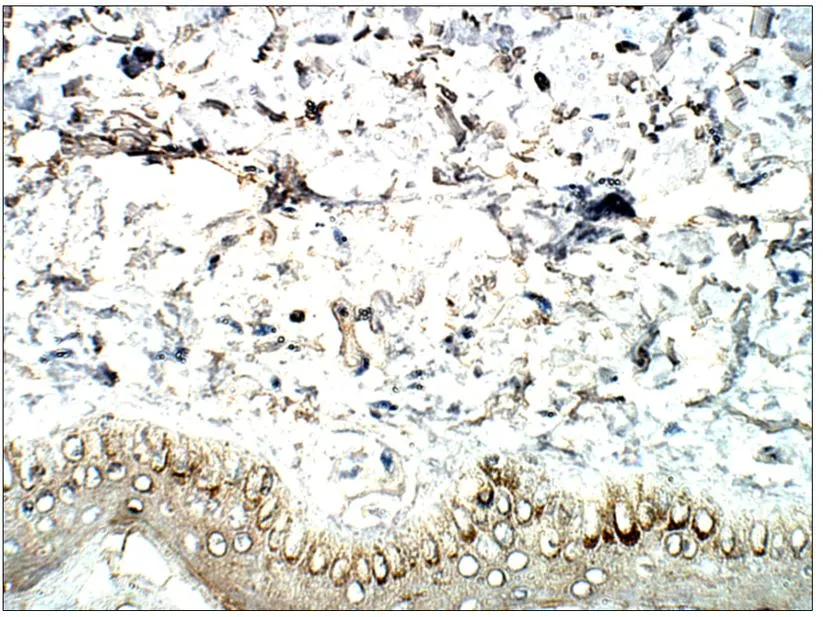
WB analysis of baboon brain tissue using GTX03808 5-HT2C receptor antibody. Dilution : 1:50
5-HT2C receptor antibody
GTX03808
ApplicationsImmunoPrecipitation, Western Blot, ELISA, ImmunoHistoChemistry, ImmunoHistoChemistry Paraffin
Product group Antibodies
TargetHTR2C
Overview
- SupplierGeneTex
- Product Name5-HT2C receptor antibody
- Delivery Days Customer9
- Application Supplier NoteWB: 1:500. IHC-P: 1:50-1:100. IP: 1:200. ELISA: 1:50,000. *Optimal dilutions/concentrations should be determined by the researcher.Not tested in other applications.
- ApplicationsImmunoPrecipitation, Western Blot, ELISA, ImmunoHistoChemistry, ImmunoHistoChemistry Paraffin
- CertificationResearch Use Only
- ClonalityPolyclonal
- Concentration0.5 mg/ml
- ConjugateUnconjugated
- Gene ID3358
- Target nameHTR2C
- Target description5-hydroxytryptamine receptor 2C
- Target synonyms5-HT1C, 5-HT2C, 5-HTR2C, 5HTR2C, HTR1C, 5-hydroxytryptamine receptor 2C, 5-hydroxytryptamine (serotonin) receptor 2C, G protein-coupled, 5-hydroxytryptamine receptor 1C, serotonin 5-HT-1C receptor, serotonin 5-HT-2C receptor
- HostRabbit
- IsotypeIgG
- Scientific DescriptionThis gene encodes a seven-transmembrane G-protein-coupled receptor. The encoded protein responds to signaling through the neurotransmitter serotonin. The mRNA of this gene is subject to multiple RNA editing events, where adenosine residues encoded by the genome are converted to inosines. RNA editing is predicted to alter the structure of the second intracellular loop, thereby generating alternate protein forms with decreased ability to interact with G proteins. Abnormalities in RNA editing of this gene have been detected in victims of suicide that suffer from depression. In addition, naturally-occuring variation in the promoter and 5 non-coding and coding regions of this gene may show statistically-significant association with mental illness and behavioral disorders. Alternative splicing results in multiple different transcript variants. [provided by RefSeq, Jan 2015]
- Storage Instruction-20°C or -80°C,2°C to 8°C
- UNSPSC12352203






